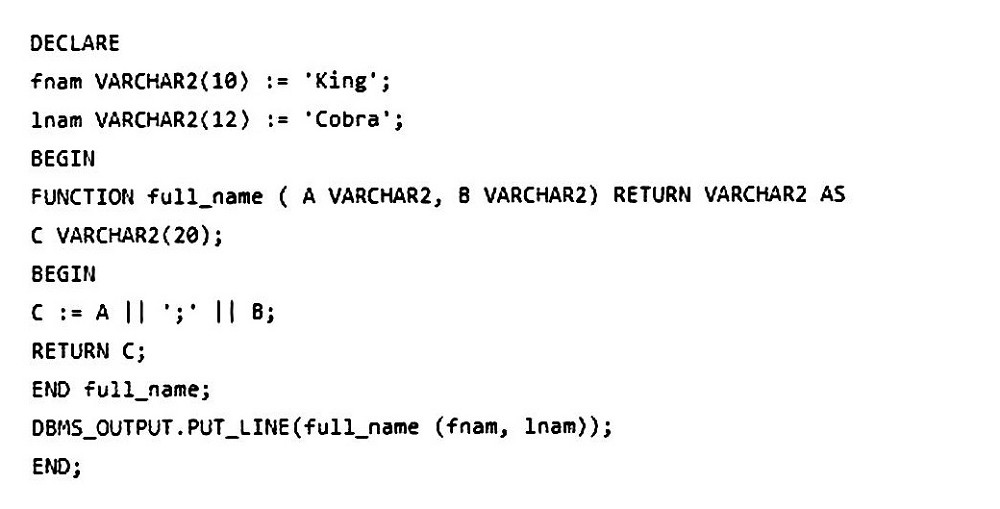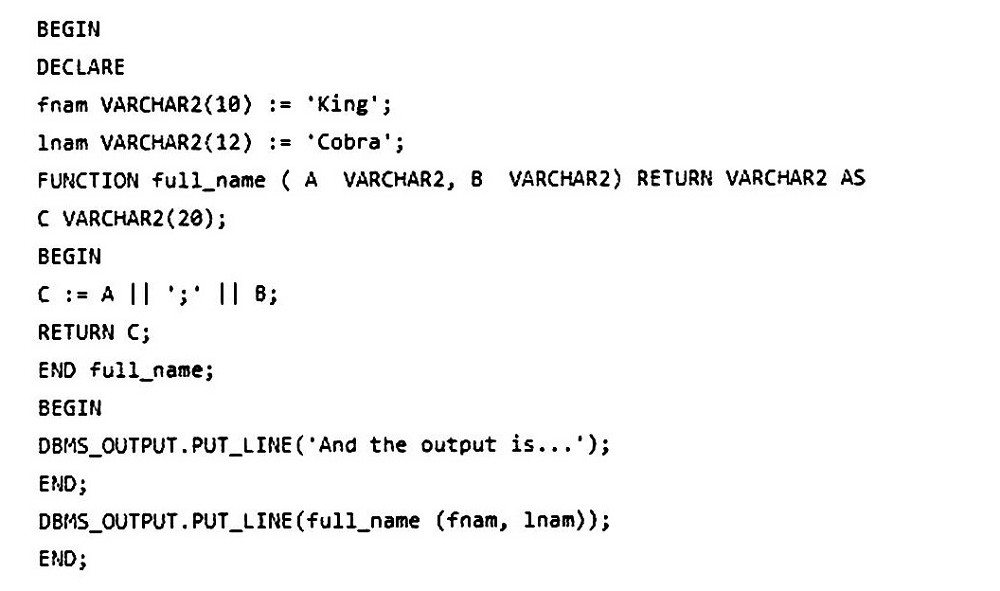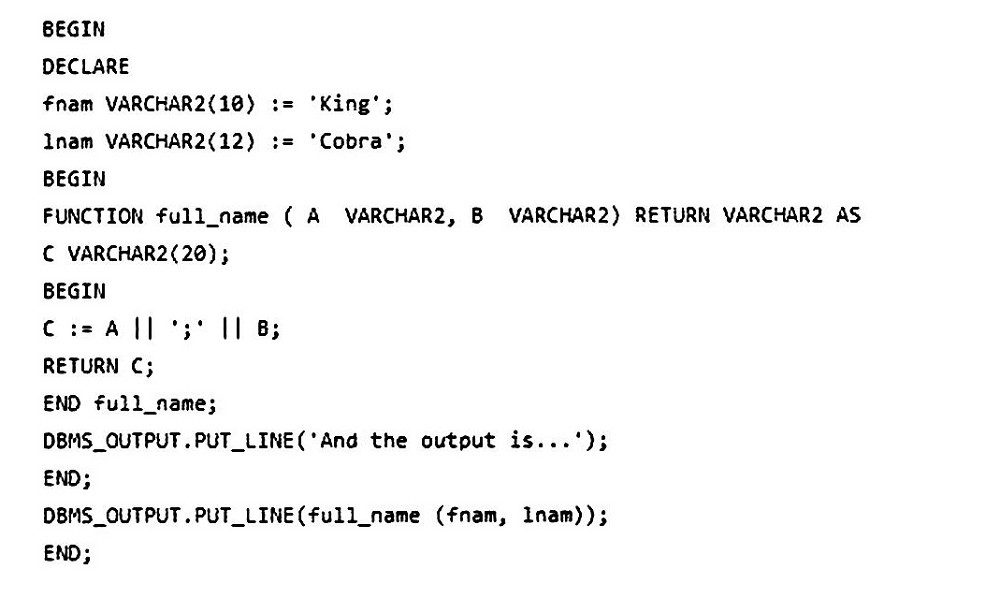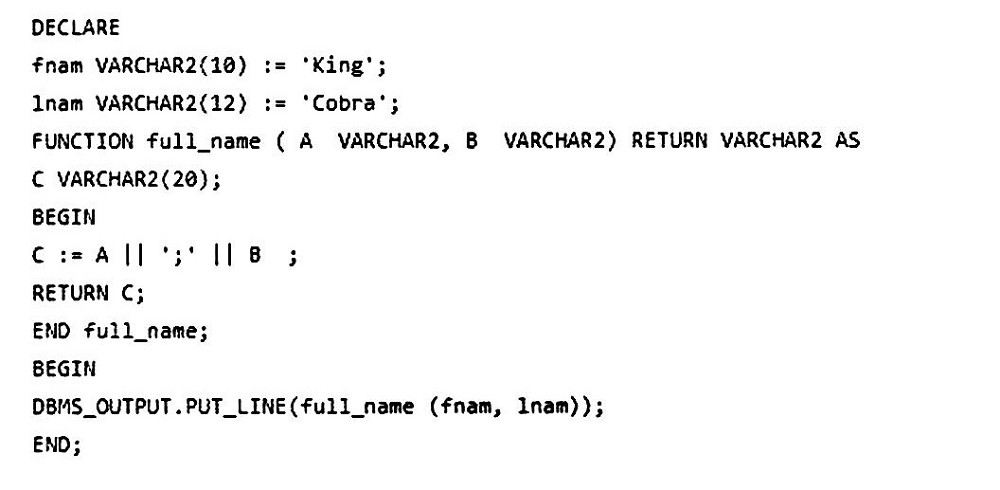Oracle 1z0-149 - Oracle Database 19c: Program with PL/SQL
Which three are true about PL/SQL subprograms? (Choose three.)
Which three are true about functions and procedures? (Choose three.)
Which three PL/SQL-only data types can be used in queries and native dynamic SQL issued from PL/SQL in the server? (Choose three.)
Which three are true about user-defined functions? (Choose three.)
Which three statements are true about Implicit Cursor and Explicit Cursor? (Choose three.)
Which two are valid MODIFIER values for the PLSQL_WARNINGS parameter? (Choose two.)
Which two are true about using the ACCESSIBLE BY clause? (Choose two.)
Examine these statements:

Which is true?
Which two are true about packages? (Choose two.)
Which is the correct method to implement a local subprogram in an anonymous block?







